Sitting at a computer running Mircosoft Windows, watching YouTube, and blogging on a platform created by a 20 year old, Milton Freidman gets this one right.
httpv://www.youtube.com/watch?v=76frHHpoNFs&feature=related

News & Opinion About Huletts Landing, N.Y.
Sitting at a computer running Mircosoft Windows, watching YouTube, and blogging on a platform created by a 20 year old, Milton Freidman gets this one right.
httpv://www.youtube.com/watch?v=76frHHpoNFs&feature=related
“The universal brotherhood of man is our most precious possession.”
Mark Twain
The Legend of St. Patrick
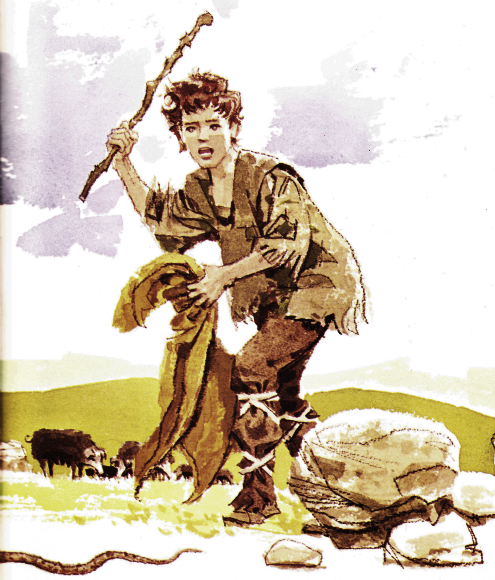
The boy with his hands bound behind his back was chained to other slaves on the deck of the pirate ship. He had been in the dark hold so long that now the daylight blinded him. Beyond the shoreline the earth wore the greenest-green he had ever seen. Above it, in the distance, rose the hills and mists and the mountains of the Antrim coast of Ireland.
Along with other slaves he was jerked ashore. As soon as his feet touched land, a powerful chieftain grabbed him.
“What are you called, lad?” he said, shoving him into the cart.
“Patrick Magonus Sucatus,” the boy answered.
“Fetched from …..?”
“Bannavem Taberniae. I was hunting in my father’s wood. The pirates came on me from behind.”
“A Roman, be ye?”
“My father is Calpurnius, a deacon and Roman official. My mother is Conchessa, and French.”
“Be ye Christian?”
“I am.”
“Away with all. Ye be Patrick, the slave, now, the pig tender.”
It was the fifth century. Ireland was wild, pagan country. Many of the Picts in the north were pirates and slave traders. They saw nothing wrong in this work. They were big brave men who wore bright tattoos on their skin. Their pagan religion had no love in it. No thought for another’s misfortune. It was cruel, and held the people by fear.
For seven years Patrick tended pigs on Slemish Mountain. He was often cold and hungry. It was then that he came to love Jesus so much. For Jesus was all he had left from home. And compared to the gods the Irish worshiped, Jesus was a marvel of love. He talked to him through all his loneliness. He spoke to him in the prayers he knew. And he made up new ones for comfort. Now all he wanted was to be free, so that he could become a priest.
There were only two things in this country he hated. And he always saw them together: the deadly snakes that slithered through the moist green fields, and the evil power of the pagan religion over the people.
One night he had a dream. In it he heard a voice saying: “Run away, Patrick. A ship is waiting to take you home!”
The next night Patrick escaped. He ran through the darkness to the Irish coast. There, as the dream promised, a ship was about to sail for France. He had no money, but he promised the captain his parents would pay his passage and he was taken aboard.
Aftre a perilous journey, they arrived at Patrick’s old home. There was much rejoicing. Patrick’s family told him of their great plans for him. But he was restless. He wanted to become a priest. He missed the land of his slavery. He went to France. There, we are told, he lived like a hermit and studied under the great monk-teacher, Martin of Tours. He became a priest, then a bishop. All the while he longed for Ireland.
And then one happy day Patrick was chosen to head a mission back to his land of slavery! It was not easy to change the faith of a nation and it was not easy for Saint Patrick. But gradually he worked through the land. Everywhere there was talk of him.
“The love of him,” the people said. “To leave his own and become one of us.”
“The greatness of him,” they said. “He drummed the snakes out of Ireland into the sea.”
“The pure wisdom of him,” they cried. “With the little shamrock he explains the Trinity.”
“The power of him,” they boasted. “He brings us heaven and ends the sting of death.”
Under Saint Patrick the whole country became Christian. Some say he was seventy-six when he died. Others swear he lived to be one hundred and twenty. Some say he comes back every Easter Eve, and that at midnight, if the wind is right, you can hear him singing hallelujahs in the Irish hills. It is indeed safe to say he will live in Irish hearts forever.
Happy St. Patrick’s day.
Michael Rawitz & Tracy Einhorn
We just learned that Michael Rawitz, who many remember from his days working in the Casino, recently got married. Michael is the son of Charlie Rawitz who lives on Pike Brook Road. To see the happy couple, here is the story from the New York Post. Congratulations Mike and Tracy!
Fr. Santora writes about Fr. Santoro
Here is a story about longtime Huletts guest, Fr. Michael Santoro, written in NJ.com by Fr. Alexander Santora. It tells about the good work Fr. Santoro is doing in his NJ parish, running some great fish dinners during Lent. As some may know, Fr. Santoro loves to fish when he visits the lake.
The renowned American folk artist, “Grandma Moses”, was probably one of the most famous people to have ever lived in Washington County.
What many people do not know is that her great-grandson, Will Moses, carries on her wonderful legacy and is a painter and artist extraordinaire in his own right. He lives and paints in southern Washington County in the town of Eagle Bridge.
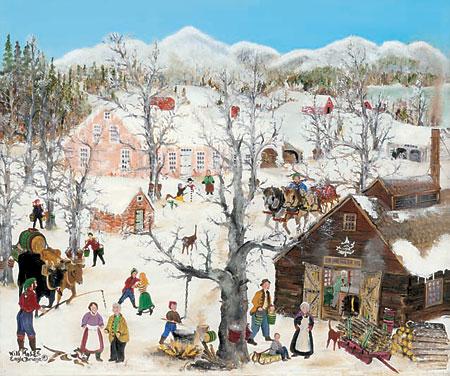
Will was kind enough to take the time to do an interview with us. We always like to promote Washington County businesses because we’re all in this together.
Grandma Moses is an iconic figure in American art. While she died in 1961, do you have any family stories or memories that would tell our readers a little bit about her?
“Grandma passed away when I was fairly young. However she was such a focal point of everyone’s attention and conversation I guess that even as a young child I knew enough to pay attention to her and what was going on around her. The fact of the matter was though, that while she was indeed very famous she was also very Grandmotherly and always welcomed her family in to visit with her. I have very distinct memories of watching her paint and visiting with her or just having a cookie at her house. I also remember her 100th birthday celebration which seemed to be quite a big affair and was covered in-depth by the media of the day and seemed to go on for some days.”
I’m sure she influenced you. Could you tell us how your artwork is similar to hers?
“Grandma’s work has indeed influenced me simply because her painting and her legacy is what I grew up with. We had her paintings in the house and her memory has lived on in a very strong way with the entire family. In reality though, I always credit my grandfather, Forrest Moses (Grandmas son) with encouraging me to paint. Forrest Moses was also a painter in his own right and he had picked up the knack from Grandma. After she died, he took it up with more seriousness and in so doing, he strongly encouraged not only me but all of his grandchildren to paint. Without his patience and encouragement I am sure I probably never would have begun to paint much less carried on with it.”
Washington County is really rural America at it’s finest. Do you have any personal favorite paintings or scenes from Washington County?
“I guess most of my paintings probably have their roots in this region. The rolling hills and checkerboard of farms and fields and woods and villages lends itself to the style of art I attempt to paint. As for favorite paintings I tend to like the most recent painting the best (perhaps just because I am happy to finally be finished with it).”
We notice that your artwork is always filled with people. We’re always interested in fostering the idea of “community” at the Huletts Current. Can you tell us how your idea of community influences your art.
“Yes, often times my paintings are filled with people in part to reflect that idea of community and responsibility we all have to our communities. I think the roles we play in this regard have changed over the years and our obligations may not be as apparent (yet never needed more) as they were years ago when folks were more reliant on their neighbor and themselves. Years ago a group of good people with good intentions would come together and build schools, hospitals, churches, roads etc. They didn’t need governments to tell them how. The need was there and the people did it. Today we elect a school board for example and all they seem capable of doing is appointing sub committees to make the decisions they were elected in the first place to decide. We need a new generation of people willing to take responsibility for their communities. People need to become active in politics, not for selfish interest but because they can offer sound leadership and make their towns a better place to live. People need to volunteer to be fireman and EMS responders, teacher aids and look after those who can not take care of themselves. It is this simple; if you are not willing roll out of bed in the middle of the night to save someone’s house or child, then you have no right to expect anyone to come to you, in your time of need. When your house is on fire, your government funded community organizer won’t save you but your neighbor just might.”
We have a number of young readers. Can you tell us how you became interested in painting and what you enjoy most?
“I became interested in painting and took it up as a career simply because my Grandfather took the time and interest to pass it along to me. Looking back on it, I am sure he probably had other things he could have been doing with his time but he was a pretty good old fella and his grandchildren were a joy to him and the fact that he did take the time has meant that I have been able to make painting my life’s work. I think if he were here today he would get a big kick out of knowing that.”
Will thank you for taking the time to talk with us, we would like to extend an offer for you to come up and paint a scene from Huletts Landing anytime you are free. Please take us up on this offer.
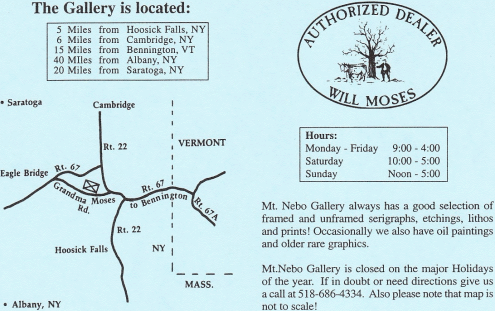
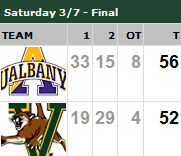 The Vermont Catamounts were eliminated yesterday from the American East tournament in overtime.
The Vermont Catamounts were eliminated yesterday from the American East tournament in overtime.
They came back from 16 pts down to tie the game at 48 – 48 and force overtime but in the end they did not prevail.
While it’s tough to see after a loss like this, they had a tremendously successful season and they’ll be back stronger next year!
To read about the exciting game, see the Burlingtton Free Press story.
Remember His Name

University of Vermont junior forward, Marcus Blakely, was named the American East’s Player of the Year for the second consecutive season. He also was named the league’s top defensive player for the second straight year.
I had the good fortune of sitting next to his mother during one game this year and having a nice chat with her. Marcus Blakely is not only a fantastic athlete but he is also a very nice person as well. Our congratulations go out to Marcus. Read about his selection here.
The Vermont Catamounts and head coach Mike Lonergan start their playoff run today in Albany at noon. Go Cats!
Phish Heads Go Nuts
Seems like some folks take our Phish friends pretty seriously.
“I have sworn upon the altar of God, eternal hostility against every form of tyranny over the mind of man.”
Thomas Jefferson
This is the time of year when the days get longer and we hear from our many good friends who enjoy renting in Huletts. It’s always good to get reacquainted with them. How does this all come together in a post? “Seasons of Love” from Rent answers the question; “How do you measure a year?”
httpv://www.youtube.com/watch?v=x8iTeDl_Wug&feature=related
 …we’d like to know about it.
…we’d like to know about it.
We have so many people who love to read over the summer, we thought we would compile a reading list of favorite books that people recommend.
I’ve always been an avid reader and will be happy to share my thoughts on the best books I’ve read the last year, but I’m a big biography reader and some people don’t like these. So if you’ve read any really good books lately, drop us a note from our contact page and tell us what good books you’ve read recently, why they were good and if we can use you name as someone who would recommend them. We’ll release our list sometime closer to the summer when all of our books worms are getting ready to relax on the beach with a good book (that you recommend).
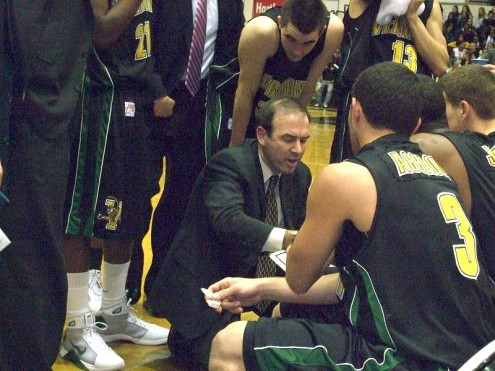
My friend, Mike Lonergan, head coach of the University of Vermont Catamounts, finished the regular season Sunday tied for 1st place in the American East conference with a record of 23-7. They will be seeded # 2 in the American East tournament which begins Friday in Albany. You may recognize Mike from the beach, where he’s been known to relax with his “first team” comprised of his wife and four children.
We’re trying to do a quick interview with him before the madness starts but this is his busiest time of year. The winner of the American East tournament will receive an automatic bid to the NCAA tournament. Mike has already won one NCAA National Championship, leading the Catholic University Cardinals to the DIII Title in 2001.
Mike brings a true love and intensity to the court every game, so here’s a loud shout out from Huletts wishing him and his Vermont Catamounts much success in the tournament ahead.
Read the Albany Times Union about the American East tournament being held in Albany this weekend.
Phish Fly in Reunion
If you missed him when he passed through Whitehall, here’s your chance to see Trey Anastasio in concert.
Adirondack Harvest Connects You to Local Farms
This is a new website, www.adirondackharvest.com, which puts products made at local farms at your fingertips to purchase.
AMD Plant Moves Forward
The company is going to be called the Foundry but it will build and operate the $4.6 billion semiconductor fabrication plant at Luther Forest Technology Campus in Saratoga County.
We came across these two links about Dr. William H. Seitz on National Public Radio’s website.
This link is to an article about his work at the Cleveland Clinic in a bone-lengthening technique called callotasis which helps children with malformed hands.
This link is to a radio spot from the program “All Things Considered” where his important and life changing work is profiled.